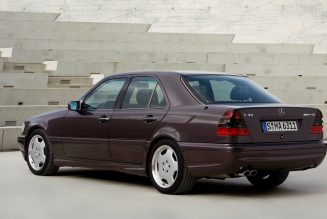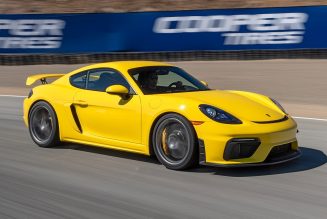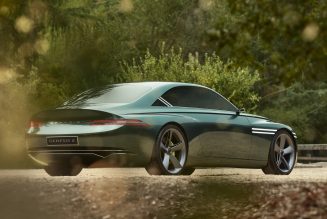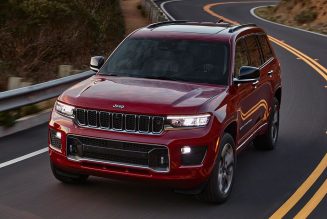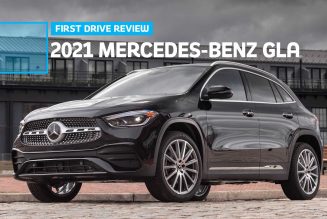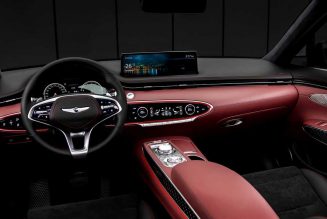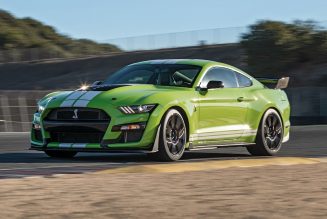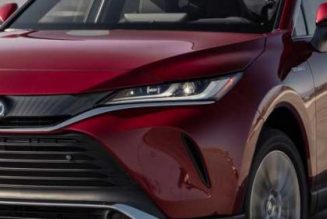The all-new 2022 Hyundai Tucson makes finding its central theme impossible: With its polarizing exterior styling, relaxing cabin, and unexpected driving character, this compact SUV embodies contrasts that somehow blend into a pleasantly cohesive whole. And the takeaway from that whole? If you work for Honda or Toyota, you might want to pay serious attention to the new Tucson.
It’s Less Shocking in Person
We’ll begin with the obvious: the 2022 Tucson‘s exterior styling. With aerodynamic concerns turning most SUVs into look-alike blobs, designers at most automakers use sheetmetal surfacing to manipulate reflections into forming the vehicle’s “lines.” Hyundai has done the opposite with its compact SUV, using sharply creased panels to break its look into disharmonious planes. The styling is a bit jarring in studio-lit photos, but it’s much subtler in person, and we like it as a creative way to make the Tucson stand out from other SUVs.
The new grille is a sign of the times (did Hyundai have mask mandates in mind when approving the design?) and we love the way the integrated daytime running lights and turn signals go black when the Tucson is shut off. This seems to be a sign Hyundai is moving away from the recently introduced front-end look we were just getting used to on the Venue, Kona, Santa Fe, and Palisade. Finally, we cannot figure out why Hyundai felt the need to rip off the Ford Mustang Mach-E‘s taillights.
The New Tucson’s Contrasting Cabin
If you’re expecting the exterior styling to bleed into the cabin, you’re in for a surprise. The Tucson’s interior has a completely different aesthetic, and it’s stellar. The dashboard forms a wide arc around the driver and front passenger, with the instruments and center stack floating on standalone panels. The arc carries into the back seat, interrupted (rather rudely, we might add) by the B-pillar. It’s a lovely design that doesn’t compromise ergonomics.
The displays are crisp and bright—bright enough, Hyundai points out, there’s no need to shade the instrument panel for daylight visibility. The movement of the computerized needles is Disney-smooth, and the gauges change with a rather nifty animation when a different drive mode is selected.
On the center stack, the 2022 Hyundai Tucson employs touch-sensitive panels in place of traditional hard buttons, and the “virtual” buttons are spaced out and marked well enough to be easy to find and press while on the move. Our biggest complaint is the lack of a proper volume knob for the stereo. No doubt Hyundai didn’t want to interrupt the waterfall flow of the center screen, but we would have preferred a more creative solution (like this one, which Hyundai should have ripped off from the Mustang Mach-E). There’s a reason the humble volume knob has endured throughout the hundred-year history of broadcast radio, and its omission is one of the Tucson’s few glaring faults. Honda learned this lesson the hard way last decade; let’s hope it doesn’t take Hyundai as long to solve this problem.
Go Ahead, Spread Out Inside
Speaking of Honda, nearly everything about the Tucson aft of the front seats reminds us of the Honda CR-V, and we mean that as the highest compliment possible. Lack of rear-seat legroom was one of the complaints consumers had about the outgoing Tucson, so Hyundai developed short- and long-wheelbase versions; the latter is the only version for the U.S. The result is a 3.1-inch stretch in legroom over the outgoing Tucson and 0.9 inch more than the benchmark CR-V. It’s a great back seat, with supportive cushions set nice and high to give a great view out the front windshield, something those prone to carsickness will appreciate.
One of the things we admire most about the CR-V is the concert-hall-sized luggage bay, and the Tucson offers a similar yawning chasm for cargo, trailing the Honda by a mere half a cubic foot, at 38.7 or 38.8 cubes depending on the model. The hands-free tailgate can be opened merely by standing behind the Tucson with the key fob on your person; no awkward kicking under the bumper. Hyundai has even adopted cargo-bay seat-back releases, too, as seen in the Honda, which allows you to drop the rear seat backs while standing at the back bumper. Very nice.
Small Engine Acting Big
Let’s talk about how the 2022 Hyundai Tucson drives. The Tucson will launch with conventional and hybrid powertrains, with a plug-in hybrid coming in a few months. We spent most of our time with the hybrid, which sandwiches an electric motor between a 1.6-liter turbocharged four-cylinder engine and a six-speed automatic transmission. The engine itself delivers 180 hp and 195 lb-ft, and combined output with the electric motor is 226 hp and 265 lb-ft of torque. All Tucson hybrids come standard with Hyundai’s HTRAC all-wheel-drive system.
This style of hybrid delivers a more conventional feel than the Honda or Toyota systems. The engine revs and shifts like a conventional powertrain, as opposed to the Honda CR-V Hybrid’s engine, which is either silent or screaming. The electric motor gives a strong and smooth boost to low-end torque, and if you didn’t know better, you might think you were driving an SUV with a six-cylinder engine. The Tucson Hybrid moves away from a stop with authority, and there’s plenty of git-up for passing on a two-lane road.
One thing confused us: The pushbutton transmission has no “B” mode to crank up the regenerative braking, which recharges the battery as the vehicle decelerates. Using the steering-wheel-mounted paddles downshifts the transmission but doesn’t turn up the regen. The only way to take advantage of regenerative braking on a long downgrade is to ride the brake pedal—but Hyundai’s integration of regenerative and friction braking is so seamless (something some automakers can’t seem to get right) it’s impossible to tell if you’re merely charging the battery or if you’re well on your way to boiling your brake fluid. Considering how much thought Hyundai put into the smart regenerative brake controls on the battery-powered Kona Electric, it’s curious that this important feature has been all but ignored in the Tucson Hybrid.
EPA fuel-economy numbers for the Tucson Hybrid are just shy of the Honda CR-V Hybrid’s at 38 mpg combined for the Blue model, 37 for the SEL and Limited—and we’ll need more seat time to see if the Tucson can deliver the same stellar real-world economy as the Honda. Still, the top trims of the Tucson Hybrid (SEL Convenience and Limited) only cost around $1,200 more than their conventionally powered all-wheel-drive counterparts, which makes them an exceptionally good buy. We’d take the hybrid option just for its better power delivery.
Big Engine Acting Small
Not that there’s anything wrong with the Tucson’s conventional engine, a stout, 2.5-liter four-cylinder that delivers 187 horsepower and 178 lb-ft to an eight-speed automatic transmission, with a choice of front- or all-wheel-drive. No turbochargers here: Like Toyota did with the RAV4, Hyundai has come to the conclusion that there’s no replacement for displacement. We drove the 2.5-liter Tucson after the Hybrid, and while the electrified Tucson is a tough act to follow, we liked the 2.5’s strong acceleration, even if it wasn’t quite as smooth as the hybrid’s, as well as its restrained volume levels. Fuel-economy estimates are modest (24/29 mpg city/highway with all-wheel drive), but in our experience, big naturally aspirated engines do a better job with real-world fuel economy than small turbo engines like the one used in the Honda CR-V.
The ride in both versions was firmer than we expect from a family SUV. A stiff suspension should hold the promise of better handling, and while curvy roads are hard to find in Tucson, Arizona—the obvious place for a media test drive, right?—on the few curves we did find, the vehicular Tucson exhibited good grip and minimal roll, though not much excitement. Similarly, the steering didn’t offer much feedback and felt artificially heavy when turning the wheel, although the smooth pavement didn’t give the Tucson much opportunity to show its stuff. We’ll have to test a Tucson at our Los Angeles or Detroit offices to cast a verdict on whether the handling shows enough of an improvement to justify the stiffer ride, but our first impression is that we’d give up a little grip for a little more compliance.
Hands on the Wheel!
Our high-trim Tucsons featured Hyundai’s latest driver assist technologies, and the adaptive cruise control and lane keeping assistance systems worked well. With the latter engaged, we took our hands off the wheel to see how long it took before the Tucson warned us (don’t try this at home, kids!), and much to our surprise, it never did—not sure how that one got past Hyundai’s product liability team. Our test car also had the remote-moving feature of the Sonata: Press and hold a button on the key fob, and the driverless Tucson will crawl slowly forward or backward, supposedly to squeeze into that last, too-narrow parking spot. Unfortunately, there’s no feature to stop the poor sap next to whom the Tucson is parked from dinging the daylights out of your doors.
There’s more coming from the Tucson lineup, including a plug-in hybrid variant offering 261 hp and 32 miles of electric-only range, plus a sporty-themed N Line version. (In addition, the new Tucson provides the basis for Hyundai’s new Santa Cruz small pickup truck.) What we’ve seen so far of Hyundai’s new compact SUV has impressed us: We like the 2022 Hyundai Tucson’s exterior styling and love the interior styling. Passenger and luggage space are stellar—unless they are avid refrigerator collectors, a family of four really doesn’t need an SUV much bigger than this. The 2.5-liter engine is good, and the hybrid powertrain is great. Pricing is reasonable, starting at $26,135 for the front-wheel-drive SE and topping out at $38,535 for the hybrid-powered Limited AWD model. We think the 2022 Hyundai Tucson would be better with a volume knob, a B-for-braking mode on the hybrid, and possibly a slightly softer ride, but the new Tucson so far seems like a magnificent alternative to the class-leading Toyota RAV4 and Honda CR-V.
| 2022 Hyundai Tucson Limited AWD Specifications | |
| PRICE | $37,285 |
| LAYOUT | Front-engine, AWD, 5-pass, 4-door SUV |
| ENGINE | 2.5L/187-hp/178-lb-ft DOHC 16-valve I-4 |
| TRANSMISSION | 8-speed auto |
| CURB WEIGHT | 3,651 lb (mfr) |
| WHEELBASE | 108.5 in |
| L x W x H | 182.3 x 73.4 x 65.6 in |
| 0-60 MPH | N/A |
| EPA FUEL ECON | 24/29/26 mpg |
| ENERGY CONSUMPTION, CITY/HWY | 140/116 kWh/100 miles |
| CO2 EMISSIONS, COMB | 0.75 lb/mile |
| ON SALE | Now |
